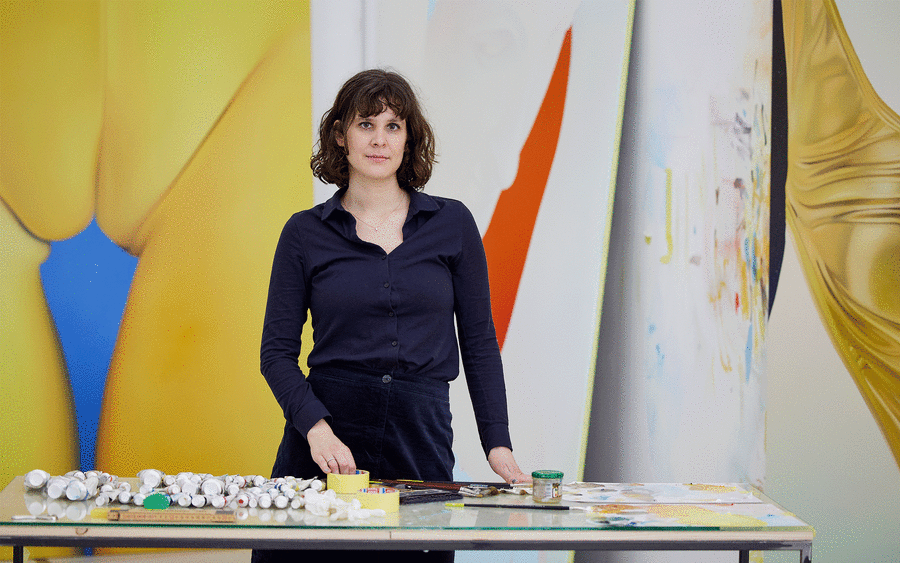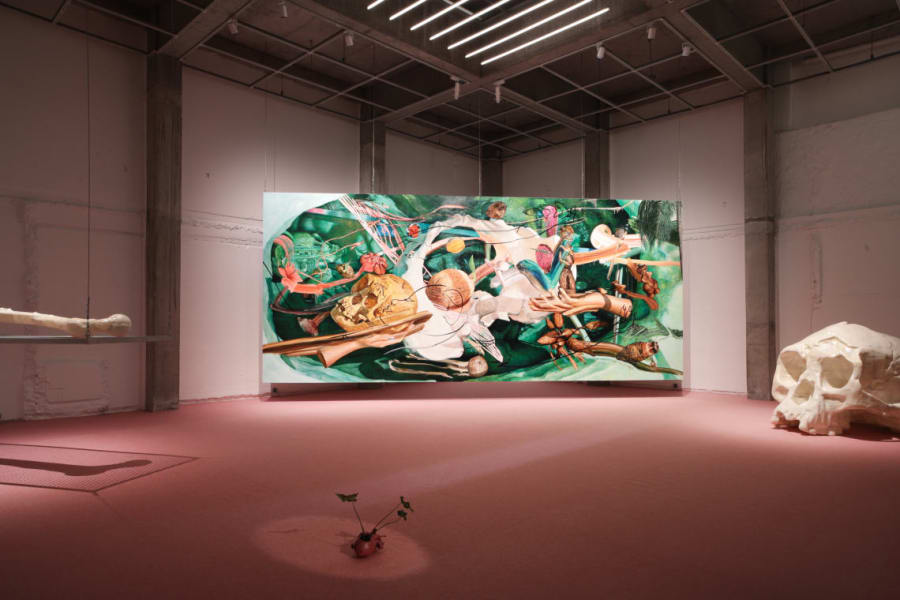Michael Birchall is an unusual curator: one that puts the audience first. ‘Now more than ever, it seems audiences are keen to develop their own questions and understanding of the world around us,’ he says. ‘In many ways, we are here to generate great programming that is “with” our audiences, not only “for” them.’
Recently, Zurich’s Migros Museum für Gegenwartskunst made headlines by naming Birchall one of five co-directors, fundamentally flattening the institutional hierarchy. It placed exhibitions on an equal footing with communication, programming, operations, and the collection. This unusual decision was a break from the traditional structures of leadership; a signal of the museum’s move away from the status quo.
The institution’s radical departure from the past has not gone unnoticed. Birchall’s ‘Interdependencies: Perspectives of Care and Resilience’ combined artworks with a considered analysis of healthcare and cultural frameworks of support, including the museum-wide decision to do away with an entrance fee – the only Swiss-based institution to do so.
‘My role as a curator is to work closely with artists and bring their vision into a reality... [we are here] to provide guidance, knowledge, and expertise,’ says Birchall. ‘Ultimately, this is about ensuring that the public who visit can grasp what the artist is trying to do.’
Here, he shares five artists who have caught his attention.
Dineo Seshee Bopape (b. 1981, Polokwane, South Africa)
‘I first saw Bopape at the 10th Berlin Biennale, which featured the powerful sound and sculptural installation Untitled (Of Occult instability) [Feelings] (2016–18). It was comprised of Nina Simone performance footage, the literary work of Bessie Head, and featured the work of three other artists. I haven’t stopped thinking about it since. Her complex installations happen over time. It’s such a careful consideration of what is recollected, re-sorted, or reclaimed from displacement. I look forward to working with Bopape for the solo exhibition, “(ka) pheko ye – the dream to come”, which opens this June at the Migros Museum.’
Omar Mismar (b. 1986 Beqaa Valley, Lebanon)
‘After a chance meeting 15 years ago at a conference in Portland, Oregon, I’ve been keenly following Omar Mismar’s work. It bridges the aesthetics of disaster while weaving in historical fact, politics, Queer identity, and metanarratives across mediums. Mismar’s mosaic installations in the Arsenale are his first-ever appearance at the Venice Biennale and have reignited my admiration.’
Rindon Johnson (b. 1990 on the unceded territories of the Ohlone people)
‘There’s a lot of anticipation for Rindon Johnson’s first Asia-based exhibition at the Rockbund Art Museum in September. Johnson began with the statement: “I wanted to cross the Pacific, but I don’t know how to sail.” The exhibition will span 7 months and takes the ocean as a subject – combining ecology, resource extraction, colonialism, and uncertain futures into an enigmatic animation.’
Yoan Mudry (b. 1990 in Lausanne, Switzerland)
‘I encountered Yoan Mudry’s work for the first time during a studio visit in Rome. His work is interested in imagery in popular culture and its dissemination. Memes and semiotics are intertwined with digital technologies. In his subversive or satirical depictions, the artist toys with subjects like Jane Goodall, E.T., commercial advertising, or Google search images. It’s clever humor.’
Linder Sterling (b. 1954 in Liverpool, UK)
‘Linder is one of those artists I have been a major fan of since my early 20s. Hailing from Liverpool (like me), her practice developed in the 1970s when her interest in gender performativity and the commodification of the body coincided with the punk scene in the north of England at that time.
As the front-woman for the post-punk band Ludus, Sterling also went on to develop photomontage that is a commentary on the objectification of the female form – using fashion, interior design, and pornography magazines to create fictitious worlds. Her work continues to challenge gender normativity, most recently shown in the incredible “Women in Revolt!” exhibition at Tate Britain that is currently touring the UK.’
Brit Barton is an artist and writer based in Zurich and Chicago.
Published on May 24, 2024.
Caption of top image: Rindon Johnson, Project Sketch, Best Synthetic Answer #1: Crossing, Ongoing project. Courtesy of the artist.


